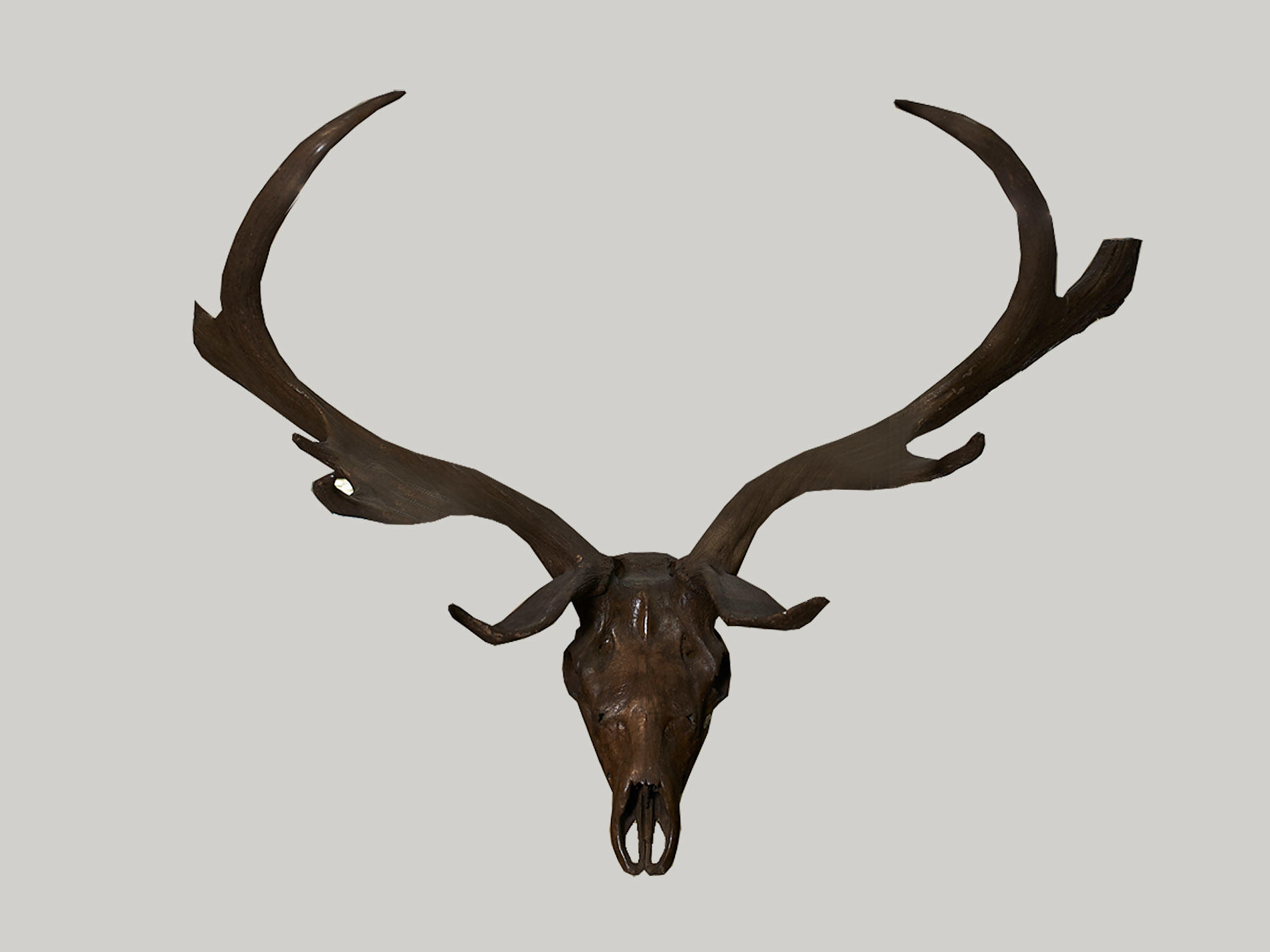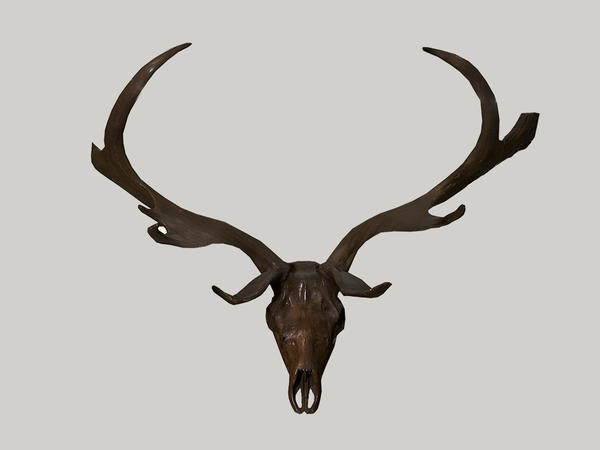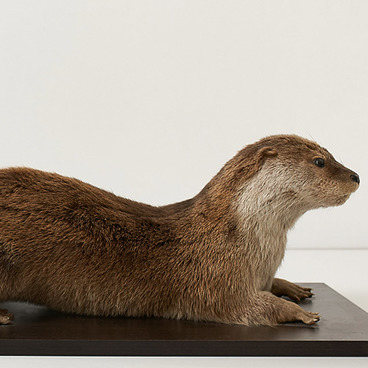The exhibit on display is the antlers of a Megaloceros giganteus or an Irish elk that lived in Eurasia and North Africa during the Pleistocene age and the early Holocene age. The mammal went extinct about 10-15 thousand years ago, but scientists still find remains of the animal, whether it be separate fragments, skulls, limbs or complete skeletons.
Scientists suggest that Irish elks lived in large groups. They developed large antlers in the course of natural selection — males with the largest antlers were the most popular with females. From generation to generation antlers were becoming larger and finally grew to gigantic size.
According to the research of paleontologists, an adult Irish elk was a large animal. It was up to two meters in height, and its weight could vary from 600 to 700 kg. The distinctive feature of the species was the huge antlers, extended at the top and having small lateral branches. The study of the found specimens allows us to say that antlers of the Irish elk were several times bigger than those of the modern representatives of the species.
The Irish elk was similar in size to the moose, but its weight was smaller and its legs were longer. That allowed the ancient mammal to easily move through open marshland or meadows overgrown with tall grass. The elks, both females or males, could enter the forested areas not before they dropped their huge antlers. The spread of the antlers did not allow them to move freely among the trees.
The Irish elk lived on wide plains and avoided forested areas. The remains of the ancient mammal are found in the southern and middle latitudes — in peatlands of Ireland, in Central Russia and in North Africa. In the caves of primitive people there are rock carvings depicting statuesque elks. Studying the drawings of the ancient man, researchers made a visual portrait of the elk — it was a powerful animal with brown back and light-colored chest.
But findings of bones of the giant in the Stone Age settlements are extremely rare. By that historical period the animal was already on the verge of extinction and did not often come into the diet of the ancient people. Paleontologists suggest that advance of forests on the plains and marshland pushed the mammal out of the habitat and led to the complete extinction of the species.
Scientists suggest that Irish elks lived in large groups. They developed large antlers in the course of natural selection — males with the largest antlers were the most popular with females. From generation to generation antlers were becoming larger and finally grew to gigantic size.
According to the research of paleontologists, an adult Irish elk was a large animal. It was up to two meters in height, and its weight could vary from 600 to 700 kg. The distinctive feature of the species was the huge antlers, extended at the top and having small lateral branches. The study of the found specimens allows us to say that antlers of the Irish elk were several times bigger than those of the modern representatives of the species.
The Irish elk was similar in size to the moose, but its weight was smaller and its legs were longer. That allowed the ancient mammal to easily move through open marshland or meadows overgrown with tall grass. The elks, both females or males, could enter the forested areas not before they dropped their huge antlers. The spread of the antlers did not allow them to move freely among the trees.
The Irish elk lived on wide plains and avoided forested areas. The remains of the ancient mammal are found in the southern and middle latitudes — in peatlands of Ireland, in Central Russia and in North Africa. In the caves of primitive people there are rock carvings depicting statuesque elks. Studying the drawings of the ancient man, researchers made a visual portrait of the elk — it was a powerful animal with brown back and light-colored chest.
But findings of bones of the giant in the Stone Age settlements are extremely rare. By that historical period the animal was already on the verge of extinction and did not often come into the diet of the ancient people. Paleontologists suggest that advance of forests on the plains and marshland pushed the mammal out of the habitat and led to the complete extinction of the species.


